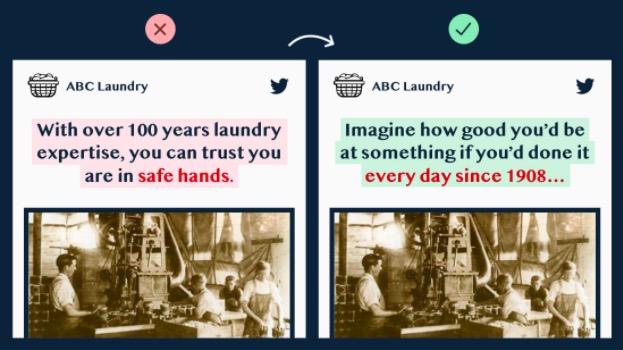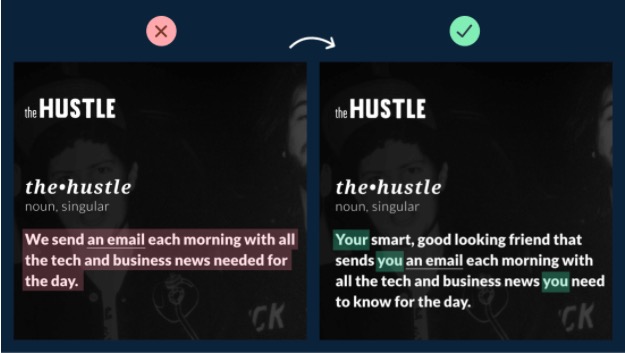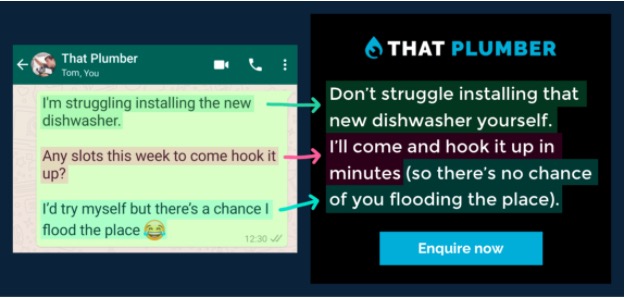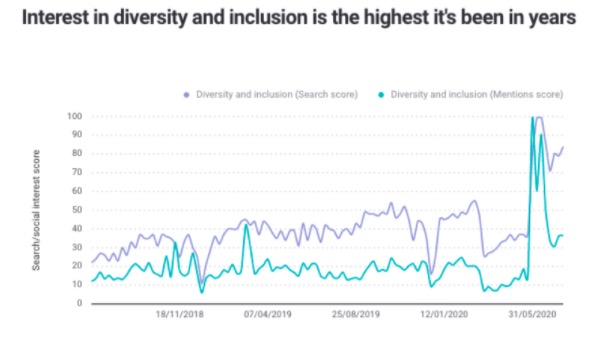The summer is over, and so much has changed in our industry over the past three months. We’ve seen new trends in copywriting, skyrocketed interest in diversity and inclusion, and participated (and observed) in ongoing conversations on what “brand purpose” means in today’s climate.
Our hope is that these insights will bring a new perspective to a project or task you’re currently working on, or spark interesting discussions with your team.
Authenticity is old news, but many still struggle to implement. One remedy? Conversational copywriting.
Marketing Examples defines conversational copywriting as “writing how you talk”. They put together a quick and useful 14-step guide to conversational copywriting. I chose 3 steps to highlight below:
“Don’t write AT the reader. Involve the reader in your copy.”

One way to include your customers in copy is to “load up on personal pronouns. People pay attention when you talk directly to them.”

“Use your customers’ words. It’s the easiest way to get the tone right.”

BrandWatch shows that interest in diversity and inclusion is the highest it’s been in a year.
“Designing inclusively benefits the majority, not just the minority” says Idean’s director of Inclusive Design Charlotte Federeday.
At Grafik we are working to do our part to design with inclusivity in mind and hold ourselves to the standard we hope to see across the industry. Thanks to our friends at Getty we have a Practical Guide to Promote Diversity in the “New Norm” to pressure test the content we put into the world and thanks to Cards FOR humanity we have a tool to test our unconscious biases. BrandWatch shows that interest in diversity and inclusion is the highest it’s been in a year.

With diversity and inclusion top of mind- designing for mindset is going to be key. No longer will designing based on broad stroke demographics cut it. Here are some examples from this summer of companies leading with inclusivity.
Starbucks opens signing store in Japan for the deaf and hard of hearing joining DC’s H Street Starbucks
Disney debuts its first bisexual character in a lead role in The Owl House
Profit with Purpose
Last week we attended HubSpot’s virtual INBOUND conference where Amazon’s Sandy Carter tidily wrapped the common themes from several sessions into one package, predicting that “…the CEOs of the future will focus on profit AND purpose.” Whether its employees looking for value in the work they do, consumers choosing products based on impact, or business leaders taking the triple bottom line from theory to reality, we will see profit and purpose materialize sooner than later. And recent reporting from Fjord Trends 2020: Emerging Trends in Business predicts that the long-term health of companies will depend on profit with purpose. We will likely see companies needing to significantly rethink their business models as a result. To me, this sounds like a great opportunity for the .orgs of the world to help ease the ethical anxiety that both consumers and companies are feeling…while potentially brushing up on pitching to corporate sponsors.